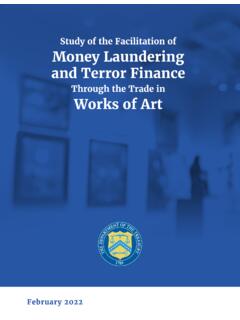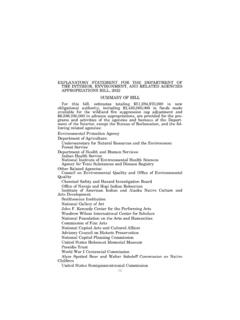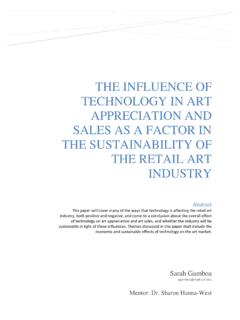Transcription of Research in Art and Design: A Common Ground Between …
1 1 Research in Art and Design: A Common Ground Between science and creative practice Maria Jo o Dur o Faculty of Architecture, The Technical University Professor and Co-ordinator of the Colour Laboratory Email address: telf: 00 351 91622060 Rua S Nogueira, Alto da Ajuda 1349-055 Lisboa, Portugal Maria Constan a Vasconcelos Professor of the Department of Design, Lus fona University, Lisbon Member of CICANT (Centre for Investigation in Communication, Culture and New Technologies) Email address: telf: 00351965161161 Rua dos Lus adas, 134, 4 A, 1300-376 Lisboa, Portugal 2 Research in Art and Design: A Common Ground Between science and creative practice Maria Jo o Dur o Faculty of Architecture, The Technical University Professor and Co-ordinator of the Colour Laboratory Maria Constan a Vasconcelos Professor of the Department of Design, Lus fona University, Lisbon Member of CICANT (Centre for Investigation in Communication, Culture and New Technologies) Research in art and design is at the forefront of debate, when art and design schools try to cope with new challenges in society.
2 This polemical issue has been much discussed in several fora, in search of a definition what could be named a disciplinary Research culture . Since there are few examples of doctoral Research using creative practice, this paper intends to give a contribution to the clarification of the subject. It does so by presenting a reflection based on a PhD process and results in the domain of arts, which combine academic methods of enquiry with creative practice. The very process of art production as a medium to investigate in the field of perception of colour in architectural space is combined with rigorous analysis and the achievement of outcomes that produce communicable knowledge for the area. This Research project integrates art and science by linking the perception of the quality of architectural space with the dimensions of art and colour-key issues for designers, architects and visual artists.
3 The fact that the doctoral degree was not awarded by an art university, demonstrates the importance of holistic and multidisciplinary ways of considering investigation nowadays and also that art and design can benefit from the experiences drawn from other disciplines. Key words: Research in art and design, Research through creative practice, methodology, colour and architectural space design 1. Introduction Investigation in art and design is nowadays brought to the fore and is framed by an intense debate focused on its philosophical basis, methods, results and criteria for evaluation, as well as links to teaching, scholarship and organization of universities and Research centers. Unlike other areas of human knowledge and activity, there is a lack of traditions in Research culture in arts and design.
4 Reasons for this were identified by several authors 3( Newbury, 1996; Frayling 1993; Allison 1994; Karlsson 2003) and they are on the basis of much reflection and discussion in order to face a different approach. Karlsson (2003) refers the skepticism of academisation of practical teaching and the concern of art schools to be subject to the scientific and humanities views of Research , instead of specific art forms and paradigms. Newbury (1996) states two main points working against the development of a Research culture in the domain of arts. One is the conviction that the artistic work is the antithesis of the academic work and another one is the argument that the craft of art and design involves already a Research process, since artists deal with several issues, from concepts, meanings and communication to technology and materials.
5 Newbury based on Coyne and Snodgrass (1991) explains that against the successful development of art and design Research militates the dual knowledge thesis which incorporates the perspective of two different ways of thinking: a logical, analytical and rational one and a subjective, idiosyncratic and irrational. Newbury (1996: 217) states that the perception held by many people that art and design are inherently mysterious activities, which are in some way inaccessible, and about which little can be said , feeds the conceptual basis for a division Between theory and practice. Similar reasons are pointed out by Allison when focusing the area of design arguing that the difficulty in recognizing the value of Research is grounded on an ambivalent attitude about the nature of design.
6 This attitude consists not only in the long-held view that any design activity is already Research by its very nature, but also the belief that its intuitive character is against the systematic enquiry Research implies. Great changes and pressures from society, market and funding of universities triggered a new perspective on Research in the field of arts and design. As stated by Hazelkorn (2003:46) the global knowledge economy and thirst for knowledge has elevated the role and importance of Research . There is an increasing recognition of the benefits of Research in arts and design, beyond the immediate benefits of fund-raising and getting a status of parity with other disciplines. In any area of knowledge, Research outcomes are indispensable information to guide better practice.
7 Social and technological developments occur very fast in society and Research based knowledge is an important way to keep up with the developments. Research nurtures the innovative and creative attitudes needed nowadays to face changes and uncertainties in societal development. Some characteristics of contemporary art as diversity, interdisciplinarity, self-reflexivity, 4erosion of boundaries Between traditional disciplines, mixed- media , seem to open the way to a culture of Research in arts. Moreover, as pointed out by Coumans (2003:3) creating new knowledge and finding the way to knowledge are inextricably related to contemporary art and design practice . The production and dissemination of knowledge that investigation can bring to the field of arts will then be relevant in helping to bridge the gap Between theory and practice and Between science and art.
8 Benefits of Research are synthesised in this quotation from Hazelkorn (2003: 48) based upon an international OCDE study: ( ) to be at the forefront of learning, creativity and the practice in the arts, communication and design ( ) to achieve its mission ( ) to foster a lively and innovative community in which professional practice, Research and scholarship, underpin teaching and learning. However, the philosophy and criteria of what counts as Research in the field of art is the core question underpinning the debate, with different perspectives about its nature, methods and results. Whilst the requisite of Research -the production of new knowledge-, has got consensus, the discussion of what is new knowledge in arts and the processes and methods to its achievement feed the debate.
9 Is a work of art or an artifact of design new knowledge by itself and the Research inherent to its production an accepted methodology? Research is defined by abilities to develop new concepts that can be used by others through a reflective systematic enquiry. Should Research in arts and design develop its own new epistemological paradigm? Much discussed, as a point of departure for this debate is the encompassing Frayling s (1993) framework, based on a tripartite approach Between the Research subject and the object: Research into arts, Research through arts and Research for arts. Research into art and design is the most conventional and recognized form of investigation in art, where art and design become the very object of study.
10 Using the academic forms of Research , especially critical investigation, it is commonly acknowledged as history of art, art theory, art critique, sociology of art etc. As Montag (2000:9) puts it the researcher is not using art to generate knowledge but is using art as a subject about which knowledge is generated . Research for art and design is defined by Frayling as Research where the end product is an artifact where the thinking, is so to speak embodied in the artifact, where the goal is not primarily communicable knowledge in the sense of verbal communication, 5but in the sense of visual and iconic or imagistic communication . This is closer to the traditional view that art and design activity already involves some kind of Research in concepts, materials and techniques to produce the artifacts, what Newbury names Research with r.





